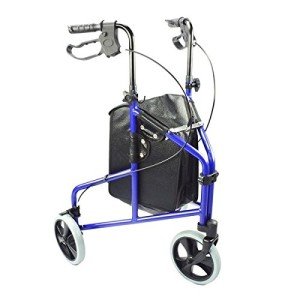
Folding Rollator
Add a review FollowOverview
-
Founded Date June 30, 1979
-
Sectors Healthcare
-
Posted Jobs 0
-
Viewed 20
Company Description
Are You Responsible For An Mobility Aid Budget? 12 Top Notch Ways To Spend Your Money

Understanding Mobility Aids: Enhancing Independence and Quality of Life
Mobility aids are essential tools that help individuals with physical impairments or conditions that prevent their ability to move freely. These aids not just promote self-reliance and boost quality of life however also provide safety and support for users in various environments. The landscape of mobility aids is broad, encompassing a range of gadgets customized to fulfill private needs. This post intends to check out the different types of mobility aids, their benefits, considerations for use, and often asked concerns.
Types of Mobility Aids
Mobility aids can be classified into several significant types, each created to assist in particular ways. Below is a table summing up the most typical mobility aids:
| Type of Mobility Aid | Description | Suitable Use Case |
|---|---|---|
| Wheelchairs | A chair mounted on wheels utilized by those not able to walk. | Long-term special needs or extreme mobility issues. |
| Walkers | A frame that offers assistance for people while walking. | Post-surgery recovery or balance concerns. |
| Walking canes | A stick used for balance and assistance while walking. | Moderate mobility issues or as a preventive step. |
| Rollators | A walker geared up with wheels and frequently a seat. | People requiring assistance over longer ranges. |
| Crutches | Devices utilized to raise and support the body weight of a person with a leg injury. | Short-lived injuries needing non-weight bearing. |
| Scooters | A motorized gadget for those who can sit however not stroll fars away. | Long trips and fatigue-prone people. |
| Raise Chairs | Recliner chairs that raise to help users in standing up. | Elderly people or those with extreme pain. |
Benefits of Mobility Aids
Making use of mobility aids extends beyond simple transportation; they serve several vital functions in boosting the well-being of users:
- Independence: Mobility aids empower users to carry out everyday activities without relying heavily on caregivers or help from others.
- Safety: Many mobility aids are created to minimize the danger of falls, offering users with stability when walking around.
- Boosted Quality of Life: By enhancing mobility, people can take part in social activities, workout, and maintain neighborhood connections, favorably affecting their mental health.
- Access to Environments: Mobility aids can help with access to places that might otherwise be challenging to browse, such as public transportation and public areas.
- Support Recovery: They play an essential function in rehab following surgery or injury by promoting steady mobility and aiding recovery.
Factors to consider for Choosing the Right Mobility Aid
Choosing the proper mobility aid can considerably influence a person’s quality of life. Here are several key factors to consider to bear in mind:
- Level of Mobility Impairment: Assess the intensity of mobility concerns to determine the most suitable kind of aid.
- User’s Physical Condition: Consider aspects like weight, strength, and total health.
- User’s Lifestyle and Environment: Analyze where the mobility aid will be utilized frequently: inside your home, outdoors, or both.
- Functional Needs: Evaluate if additional features such as storage, seating, or height adjustments are needed.
- Assessment with Professionals: Always consult from healthcare experts for guidance customized to private scenarios.
Often Asked Questions (FAQs)
Q1: What is the distinction in between a walker and a rollator?A1: A walker is a basic frameused for assistance and balance, while a rollator has wheels, offering much easier mobility and typically includes additional features such as a seat and storage. Q2: Can mobility aids be covered by insurance?A2:
Many health insurance plans, including Medicare, might cover mobility aids if they are deemed medically required. It is recommended to seek advice from with your insurance coverage service provider for specific details. Q3: How do I understand when it’s time to use a mobility aid?A3: If you’ve experienced regular falls, persistent discomfort
while walking, or have trouble finishing everyday activities
, it might be time to consider a mobility aid. Consult a healthcare expert for customized suggestions. Q4: Are there mobility aids developed for outdoor use?A4: Yes, numerous mobility aids are specifically created for outdoor environments, including scooters, Outdoor walker walkers, and all-terrain wheelchairs, geared up to handle different surfaces. Q5: Can I use a mobility aid after surgery, like knee replacement?A5: Yes, mobility aids such as walkers and crutches are frequently suggested post-surgery to aid recovery and keep safety as you gain back
strength. Mobility aids play an invaluable role in supporting individuals with mobilitychallenges, facilitating self-reliance, and improving general lifestyle. With a diverse variety of alternatives offered, it’s vital for users to evaluate their special needs and consult with specialists to pick the most proper aid. As innovation and design continue to develop, these aids will certainly become much more easy to use and effective, promoting a more inclusive world for everyone. By comprehending the various kinds of mobility aids and their particular benefits, people can make educated options that enhance their mobility and help with a more active and satisfying lifestyle.
